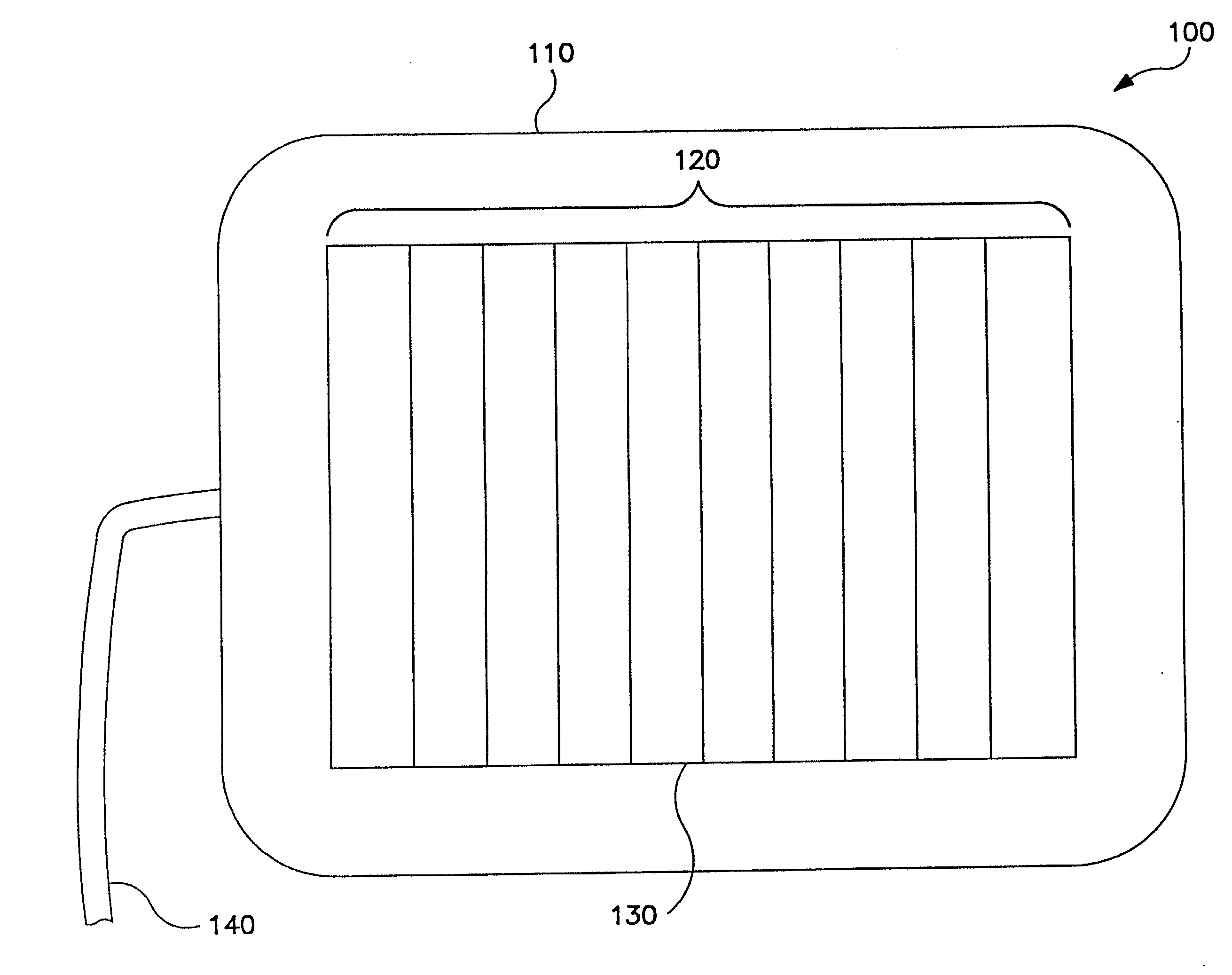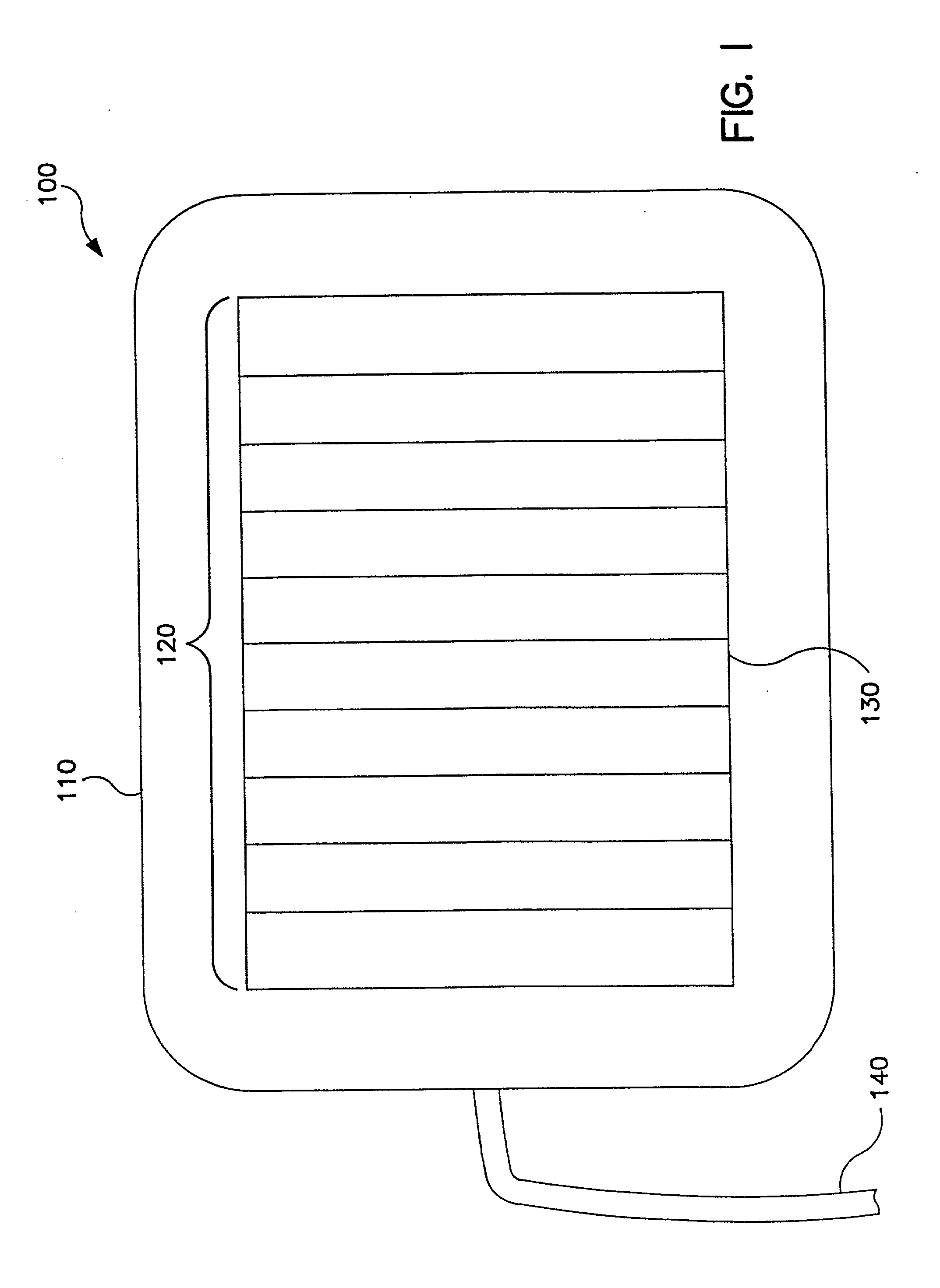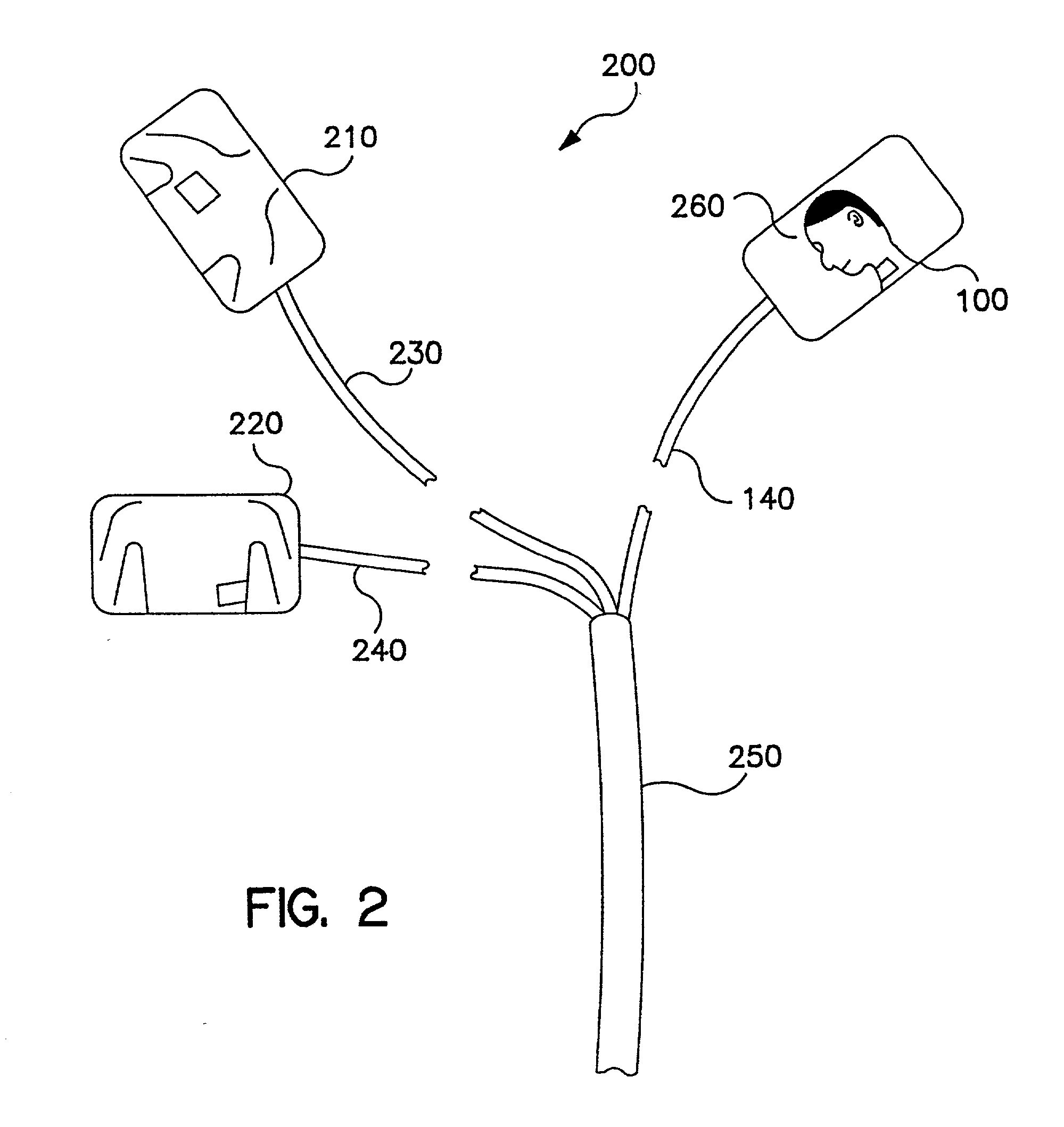Integrated cardiac resuscitation system with ability to detect perfusion
a cardiac resuscitation system and perfusion technology, applied in the field of integrated cardiac resuscitation systems with the ability to detect perfusion, can solve the problems of long-term complications or death, adverse treatment of patients, and resultant loss of pulse and blood pressure, and achieve the effect of maintaining stability over the carotid artery, adequate isolation of the system from noise-induced transducer movement, and high degree of certainty
- Summary
- Abstract
- Description
- Claims
- Application Information
AI Technical Summary
Benefits of technology
Problems solved by technology
Method used
Image
Examples
Embodiment Construction
[0019] Reference will be now made in detail to the present preferred embodiments of the present invention, examples of which are illustrated in the accompanying drawings, wherein like reference numerals refer to the like elements throughout.
[0020] The present invention provides for a noninvasive cardiac resuscitation system including a cardiac resuscitation pad set including three conductors terminating in two defibrillation-monitoring pads and an adhesive Doppler pad. The Doppler pad includes a piezoelectric transducer that generates continuous waves (CW) at a constant frequency and receives waves that have been scattered by red blood cells flowing through the carotid artery. The waves received are then sent to a processor which calculates the associated Doppler shift and analyzes the frequency information to determine the presence or absence of the patient's carotid pulse, which is the diagnostic test for cardiac arrest, and a duration of the pulse, if any, which is indicative of ...
PUM
 Login to View More
Login to View More Abstract
Description
Claims
Application Information
 Login to View More
Login to View More - R&D
- Intellectual Property
- Life Sciences
- Materials
- Tech Scout
- Unparalleled Data Quality
- Higher Quality Content
- 60% Fewer Hallucinations
Browse by: Latest US Patents, China's latest patents, Technical Efficacy Thesaurus, Application Domain, Technology Topic, Popular Technical Reports.
© 2025 PatSnap. All rights reserved.Legal|Privacy policy|Modern Slavery Act Transparency Statement|Sitemap|About US| Contact US: help@patsnap.com



